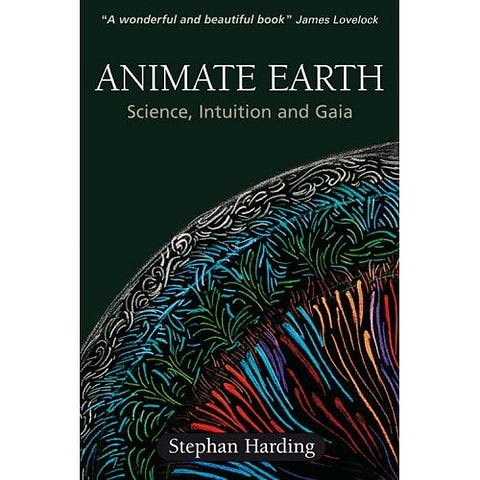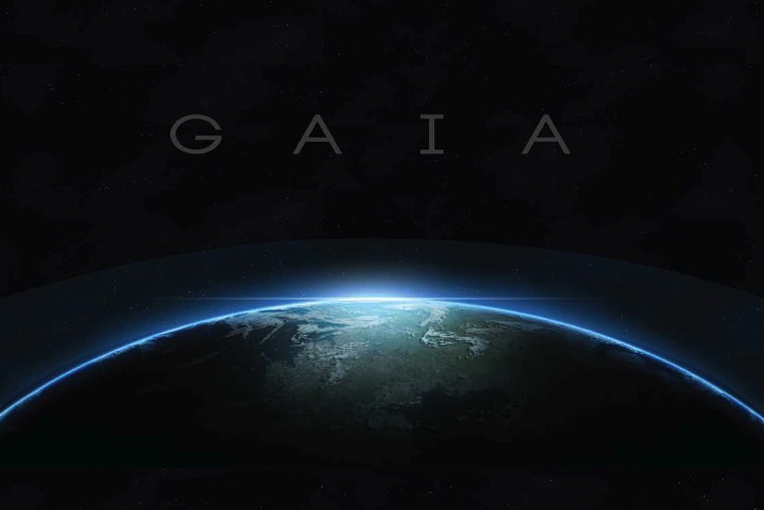Excerpt from the Worldview Dimension of Gaia Education’s online course in Design for Sustainability
“The Gaian understanding of the world — that which speaks of the encompassing earth not as a machine but as an autopoietic, living physiology — entails an embodied, participatory epistemology. As the earth is no longer viewed as a machine, so the human body is no longer a mechanical object housing an immaterial mind, but rather a sensitive, expressive, thinking physiology, a microcosm of the autopoietic Earth.”— David Abram (1991, p.71)
In the late 1960s, while working on NASA’s first exploration of Mars, the atmospheric chemist and engineer of scientific measuring devices James Lovelock, proposed a groundbreaking new hypothesis. He argued that when we look at planet Earth as a whole system, the living and the non-living components seem to be tightly interrelated and interacting through complex feedback loops. Lovelock proposed that life itself — over an evolutionary time-scale — has participated in the creation of the atmospheric composition of gases we observe in the Earth’s atmosphere today.
David Suzuki talks with James Lovelock about the origins of his “Gaia” hypothesis, which suggests that the Earth is one organism. From the documentary series “The Sacred Balance”, produced by Kensington Communications (www.kensingtontv.com.)
Life actively contributed to the creation and maintenance of conditions on Earth that are favourable for higher organisms. In the words of Janine Benyus, the founder of the Biomimcry Institute: “Life creates conditions conducive to life.” Over the course of the last forty years James Lovelock’s hypothesis has matured into a new field of scientific investigation that is referred to as Gaia theory or Earth Systems Science.

James Lovelock is an independent scientist, environmentalist and futurologist, best known for proposing the Gaia hypothesis, which postulates that the biosphere is a self-regulating entity with the capacity to keep our planet healthy by controlling the chemical and physical environment; Lynn Margulis was an American biologist, best known for her contributions to the endosymbiotic theory, a theory to explain how symbiotic relationships between organisms of often different phyla or kingdoms are the driving force of evolution; In her book Biomimicry, Janine Benyus names an emerging discipline that seeks sustainable solutions by emulating nature’s designs and processes. (Image left, image middle, image right)
“[The] evolution of organisms [is] so closely coupled with the evolution of their physical and chemical environment that together they constitute a single evolutionary process, which is self-regulating. Thus the climate, the composition of the rocks, the air, and the oceans are not just given by geology; they are also the consequences of the presence of life. Through the ceaseless activity of living organisms, conditions on the planet have been kept favourable for life’s occupancy for the past 3.6 billion years.”— James Lovelock (2000, p.25).
One of Lovelock’s close collaborators in the development of Gaia theory was the biologist Lynn Margulis. Dorian Sagan and Lynn Margulis argue: “Clearly life on the planet is some kind of interacting unity” and suggest “if symbiosis is defined as the living together in protracted physical continuity of different kinds of organisms then … Gaia is simply symbiosis seen from space” (Sagan & Margulis, 1993, p.353). Lovelock has described Gaia theory as planetary physiology or as “a practical science of planetary medicine” (Lovelock, 2000).

Dorian Sagan; Evolution moves towards cooperation at higher levels of integration; Elisabet Sathouris (image left, image middle, image right)
In Gaia — The human journey from chaos to cosmos, Elisabet Sahtouris suggests: “Living and non-living matter are continuous, such that life is no more, no less than a geological process that becomes a biogeochemical process through its own transformation over time.” (1989, p.57). Sahtouris has since dared to go a step further and has suggested that by a similar argument it may not be useful to make such a either-or distinction between living and dead matter. It may, in fact, be useful to explore a perspective that regards the entire universe as a continuous evolutionary living process. In Prologue to a New Model of the Living Universe she writes:
“Instead of projecting a universe of mechanism without inventor, assembling blindly through particular, atomic and molecular collisions a few of which came magically to life and further evolved by accidental mutations, I propose that there is reason to see the whole universe as alive, self-organizing endless fractal levels of living complexity as reflexive systems learning to play with possibilities in the intelligent co-creation of complex evolving systems. I propose that it is actually more reasonable to project our life onto the entire universe than our non-living machinery, which is a derivative of life, a truly emerging phenomenon, rather than a fundamental one. I propose that it is possible to create a scientific model of a living universe, and that such a model is not only scientifically justified but can lead to the wisdom required to build a better human life on and for our planet Earth … Toward that end, I propose:
The scientific definition of reality should be the collective human experience of self, world and universe as inner and outer worlds perceived from individually unique perspectives. (We have no other legitimate basis for creating cosmic models.)
Consciousness (awareness) shall be axiomatic for the simple and obvious reason that no human experience can happen outside it.
Formal experiments have as their purpose the creation of publicly shareable models of reality that permit common understanding and prediction.
Autopoiesis (continuous self-creation) shall be adopted as the core definition of life. Since galaxies, stars, planets, organisms, cells, molecules, atoms and sub-atomic particles all fit this definition, this implies that life is the fundamental process of the cosmos, a self-creating living whole with self-creating living components in co-creative interaction.
Nature shall be conceived in fractal levels of holons in holarchy, holons defined as relatively self-contained living entities such as those listed in d) and holarchy defining their embeddedness and co-creative interdependence on energy, matter and information exchange.”— Elisabet Sahtouris

In Animate Earth Stephan Harding explores how Gaian science can help us to develop a sense of connectedness with the ‘more-than-human’ world. Animate Earth is also a documentary film written and presented by Dr Stephan Harding.
…
Note: This is an excerpt from the Worldview Dimension of Gaia Education’s online course in Design for Sustainability. In 2012 I was asked to rewrite this dimension as part of a collaboration between Gaia Education and the Open University of Catalunya (UOC) and in 2016 I revised it again into this current version. The next opportunity to join the course is with the start of the Worldview Dimension on May 21st, 2018. You might also enjoy my book ‘Designing Regenerative Cultures’.





